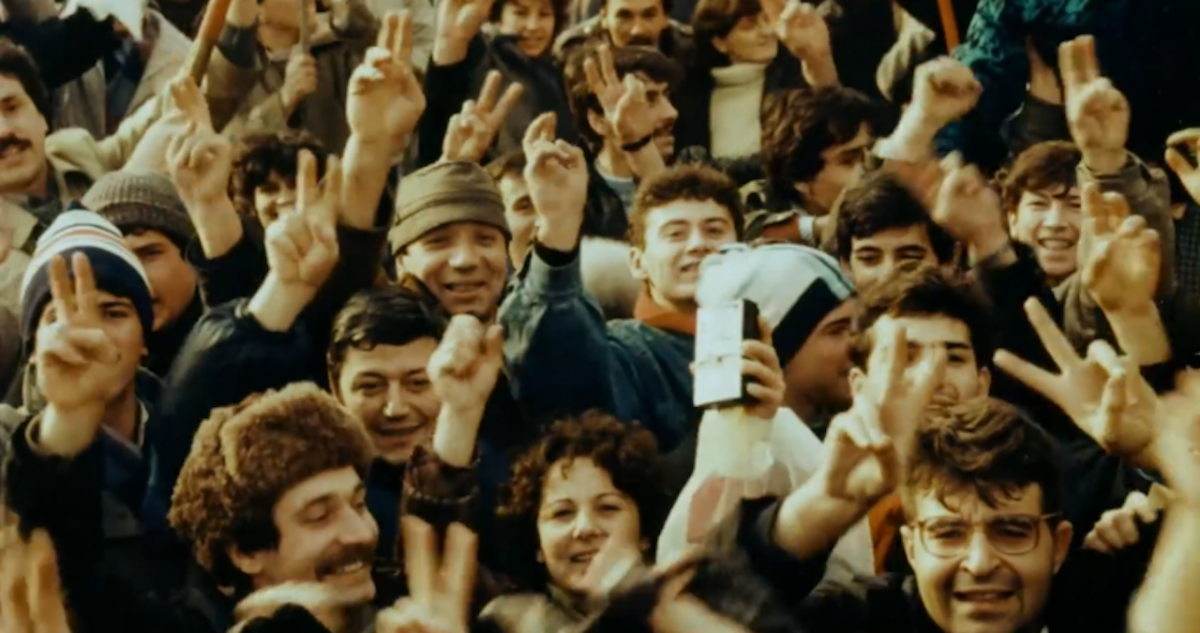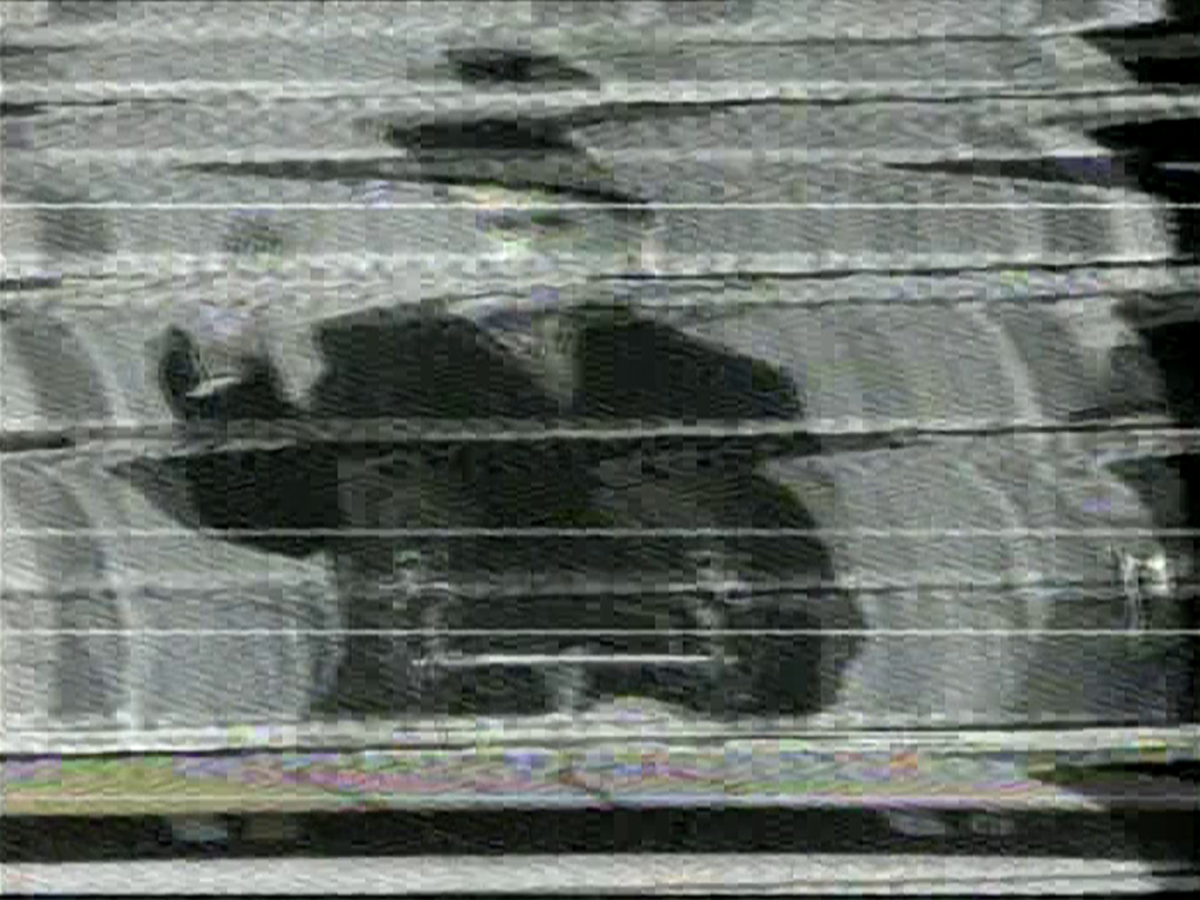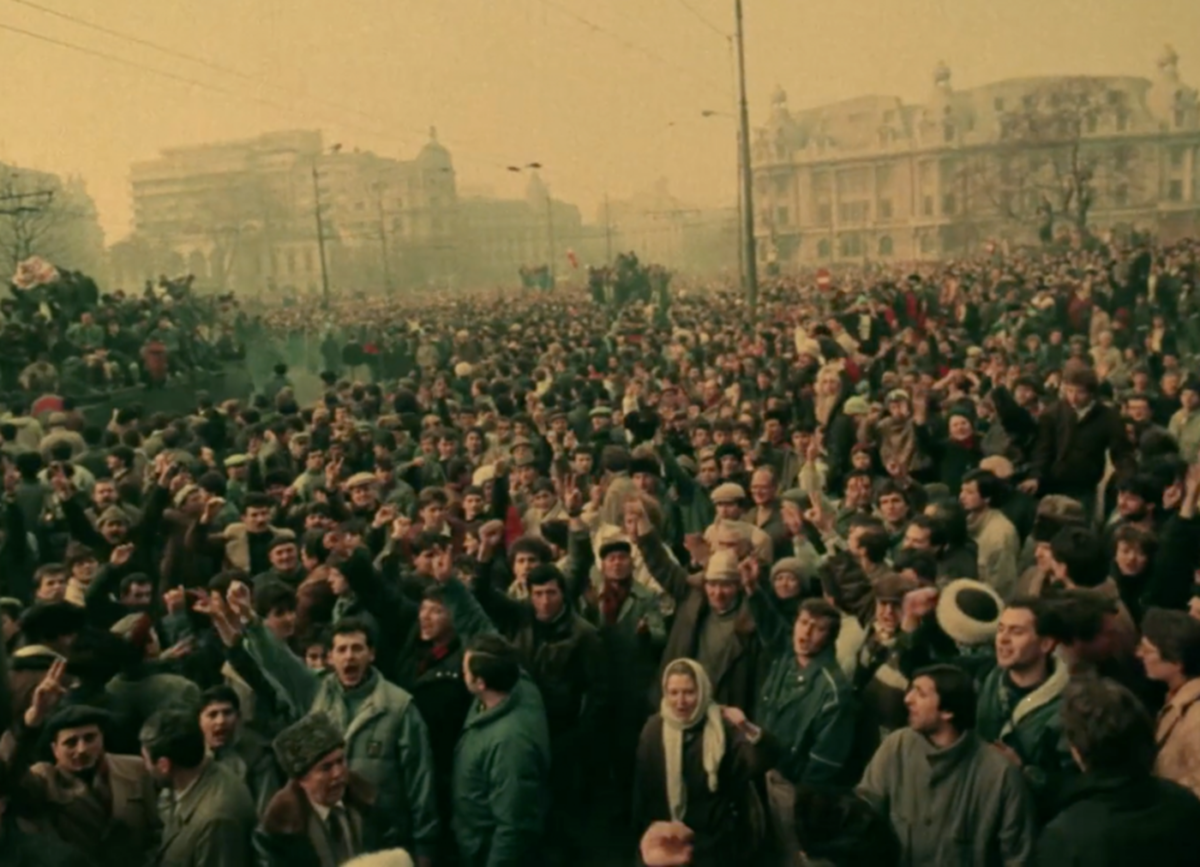In 1989, most of the Eastern European countries made soft transitions from communism to capitalism, but Romania experienced highly traumatic and violent reprisals for the protests against Nicolae Ceaușescu, starting in Timișoara and spreading to other major cities during December 15-25. It is hard to believe that a smooth transition would have been possible given that Nicolae Ceaușescu and his backers weren’t willing to let go of power, although the Cold War was coming to an end regardless.
In fact, Romania had already experienced a failed protestThe strike in Brașov, 1987, is better known because it happened so close to the fall of communism. However, there were other workers’ strikes during communist Romania, like the miners’ strike of 1977. two years earlier, in Brașov, when workers took to the streets to demand better work & living conditions, a riot that unfortunately ended with severe consequences for them (the only documentary about this event is Brașov 1987. Doi ani prea devreme/Brașov 1987. Two Years Too Soon, 2017, directed by Liviu Tofan). On the 16th of December 1989, when the peaceful solidarity gathering for pastor László TőkésPastor László Tőkés was about to be disciplinary relocated from his church in Timișoara on the 16th of December 1989, when people gathered at his home to stop the eviction. in Timișoara got out of control and escalated to a full-blown protest against the regime, the geopolitical context was (finally) supportive of overthrowing the government. Nicolae Ceaușescu’s austerity measures and terror had long ago made him unpopular (to say the least), although it would seem that he wasn’t aware of his real status. After ordering the suppression of riots in Timișoara (causing numerous victims), he also ordered meetings in factories to tell workers that the events were a result of foreign agitators. The authorities’ strategy backfired: it only caused rumors among workers who eventually joined the riots in support of their peers. Later, on December 21st, Ceaușescu also agreed to a public appearance in Bucharest in hope that he would (re)gain the workers’ trust—his plan failed once again, and the assembly turned into a protest. As the country sank into turmoil and chaos, Ceaușescu and his wife, Elena, were arrested outside Bucharest, while trying to escape. On Christmas, the Romanian Television (now self-proclaimed as free) broadcasted the video of the trial and execution of the couple. The 25th of December is conventionally the ending of the Revolution, but its echoes continued long into the next year, with new elections and street protests that ended in yet another violent reprisal, in mid-1990.Peter Siani-Davies, The Romanian Revolution of December 1989, (Ithaca and London: Cornell University Press, 2005) In all fairness, the 1989 December Revolution was more complex than an overview could cover; the paradox of it was that the more information was made public, the less was known, even among people in power, about what made the chaos possible.
***
The December 1989 Revolution in Romania also marked a turning point in the global television history for several reasons: for the role television played in the development of the events, for entertaining a sense of witnessing history, and most of all for testing the limits of representation through the filmed or photographed image. After a series of anticlimactic changes of power throughout Eastern Europe, the world was finally watching a struggle for freedom. But soon after victory was declared, initial information was debunked, and this poked holes in the revolutionary narrative: the assumed death toll of victims in Timișoara turned out to be a matter of hundreds, not thousands, and the corpses that were shown (in audiovisual media and photographs) as proof did not belong to the victims of the Revolution—they were corpses in a cemetery for the poor in Timișoara. Even the recording of the Ceaușescu couple’s trial and execution raised suspicions, as some argued that the real execution was omitted between the editing cuts.Eva Kernbauer, ‘Establishing Belief: Harun Farocki and Andrei Ujică, Videograms of a Revolution’, Grey Room, Fall 2010, pp. 72-78 These inspired Jean Baudrillard to write an essay on the subject, ‘The Timișoara Massacre’Konrad Petrovszky, Ovidiu Țichindeleanu, coordonatori, Revoluția Română Televizată. Contribuții la istoria culturală a mediilor, Cluj: Idea Design & Print, 2009, stating that the broadcast of the Romanian Revolution and its aftermath confirmed the failure of the video image to provide the truth. This new era was about spectacle and credibility rather than authenticity; though information spread as fast as ever, it was no longer evidence of reality or truth. The Romanian Revolution had been turned into a television show, abandoning real victims in favor of plausible ones.
The much-discussed footage of the December 1989 Revolution came from two main sources: a) the Romanian Television, the main producer and distributor of state-approved newsreels, and b) amateur (or even professional) filmmakers who owned or had access to cameras. It was used in the ‘90s both in documentaries and television, and it continues to be featured on special occasions. In 2019, celebrating 30 years since the fall of Communism, a series of ‘90s documentaries about the Revolution (and its aftermath) were screened in Romanian film festivals. One World Romania, Les Films de Cannes à Bucarest and Astra Film Festival in Sibiu all marked the anniversary of the events with special programs, which brought forward a few documentaries that were rarely screened in the past decades and unknown to the younger generation. Two of these were 20-minute shorts produced by the main documentary studio founded by the Communist regime, the ‘Alexandru Sahia’ Documentary Studio (or Sahia Film): Primul jurnal liber/The First Free Newsreel (1990) and De Crăciun ne-am luat rația de libertate/On Christmas We Took Our Portion of Freedom (1990, directed by Cornel Mihalache and Cătălina Fernoagă).

These films, produced by Sahia Film right after the fall of the Ceaușescu regime, are relevant for understanding the general confusion. Both use footage from the immediate aftermath of the December 1989 Revolution and capture the Manichean mode of representation of that time—all that had to do with the past was bad. The films internalize and project the mood of December 1989, at a time when information was unclear even to the media. The First Free Newsreel sides with the protesters, echoing what might have been their perspective; it shows a moment of hope and victory, but filters it through a vindictive narration of the historical turning point. On Christmas We Took Our Portion of Freedom refers to the practice of rationing the food, electricity and every other product during Ceaușescu’s austerity measures in the ‘80s, though the film itself recycles images of victims of the Revolution as well as the audio recordings of those who called the studio to ask for more information during December 25-26. The soundtrack is an attempt to give voice to common people, some who were afraid for their loved ones, others who wanted to vent out their rage against the former regime or what was happening around them, and others who just needed to be heard.
However, the two shorts also make statements about the history of the institution that produced them, consciously trying to realign the studio’s mission. Even more than the other two communist production companiesDuring the communist period, Romania had three major studios: ‘București’ Studio, dedicated to fiction film, Documentary Film Studio ‘Alexandru Sahia’ and AnimaFilm (for animation)., Sahia Film was associated with the communist regime because of its non-fictional profile which implied that filmmakers usually had to do more outspoken propaganda than fiction film directors. For example, the title The First Free Newsreel recalls the former newsreels produced at Sahia Film since its inauguration in 1950 and up until 1974, when the National Television took over. Therefore, Sahia filmmakers symbolically announce two things: 1) they make an admission of sorts that some of their past films were too controlled to express their vision accurately, and 2) that they were determined to break with that past. On Christmas… edits the audiovisual footage inside a frame story that starts with a young man, inside a studio, who breaks the glass display case of a noticeboard and cuts a hole in the picture of Nicolae Ceaușescu. Again, the symbolism of this is clear. In fact, Sahia Film tried to rebrand itself in the ‘90s by promoting formerly censored documentaries, but failed to reorganize and to adapt to a new European film market. By the end of the ‘90s the studio collapsed altogetherTo be fair, the entire Romanian cinema infrastructure collapsed during the ‘90s, and it was completely restructured in the 2000s. However, this transition was indeed more difficult for documentary filmmakers., leaving behind an archive of valuable non-fictional materials that has only started to be reevaluated in recent yearsThe most prolific project of film archeology regarding the studio is Sahia Vintage, curated by scholar Adina Brădeanu and produced by One World Romania. The program is comprised of screenings, DVD collections and cinema educational interventions, and also has an online platform.. In truth, the matter of Sahia films is more complicated and it would not be fair to believe that they were only propaganda.
Timișoara: Decembrie 1989/Timișoara: December 1989 (1992)Constantin Pârvulescu, ‘Embodied histories. Harun Farocki and Andrei Ujică’s Videograms of a Revolution and Ovidiu Bose Paștina’s Timișoara – December 1989 and the uses of the independent camera’, Rethinking History, Vol. 17, No., 354-382 (2013): 354-382, directed by Ovidiu Bose Paștina, is another film produced by Sahia Film shortly after 1989, but differs significantly from the first two already mentioned. Timișoara… doesn’t comment so much on the history of Sahia, though it is representative for Ovidiu Bose Paștina’s filmography. As a young filmmaker in the ‘80s, who refused to comply with the censorship, he was only allowed to make health and safety films, and so he learnt to be creative inside that paradigm—something that can be seen in the metaphoric way he edits interviews and footage (still photography only) in what is basically a talking heads documentary. It is a feature film that focuses exclusively on the events in Timișoara, with a perspective that is characteristic for the post-communist transition in Romania—therefore, the victorious atmosphere is missing from this representation. Instead, Timișoara… assumes a more reflexive observation that centers around testimonials of those who did take part in the protest, some of them having lost loved ones, and are still waiting for solace and justice. While the film doesn’t make any direct statement about the difficulties brought about by the transition in the ‘90s, it does reflect the general disappointment and desolation (experienced right after the fall of Nicolae Ceaușescu’s regime). While the two shorts from Sahia Film aimed to tread in the footsteps of the Revolution, to emulate the hopes and sorrows of December, Timișoara… steps aside from the symbolism as well as the spectacular nature of the event in favor of immediacy. It cannot tell what actually happened—neither can the participants—but it can gather more points of view; and in the process of doing this, it shows the impact the Revolution had on the witnesses & victims, which is less obvious or spectacular, but more authentic, than previously circulated footage. More so, Timișoara… doesn’t really engage the past, but the present: it is not about what happened in ’89, but about what isn’t happening now (i.e. justice for the victims as December 1989 recedes into the past).

The documentaries about the Revolution illustrate the perspective of the period in which they were produced, thus revealing the progression from hopefulness toward victimization. In some cases, as those mentioned above, they also document changes brought about inside their institutions by the events of December 1989. In fact, when seen through these filters, they might offer more valuable insights into the Revolution. The best-known and most comprehensive essay on the usage and meaning of the Romanian Revolution footage remains Videograms of a Revolution (1992, directed by Harun Farocki and Andrei Ujică), a videographic study that follows the usage of amateur and official cameras in order to disclose the change of power as it was taking place. Videograms isn’t a matter-of-fact narrative about the Romanian Revolution: unlike other films, it doesn’t even try to document the events at all (though it can be argued that it does show a side of the Revolution). Instead, the film is a deconstruction of competing narratives about the Revolution, as they were televised back then, revealing markers of the spectacular and performative (including rehearsals for how to appeal to the public carried out in the Romanian Television’s studio).
Farocki and Ujică had an analytical and exterior approach to the footage, but most of the ‘90s films have an understandably biased overview of the December Revolution. From this point of view, an interesting case is După Revoluție/After the Revolution (2010, directed by Laurențiu Calciu): the footage was shot during the protests in 1990, but edited almost 20 years later, conveying a certain tension between two historical viewpoints. At the beginning of 1990, Romanian people were divided by the decision of National Salvation Front (a new political group comprised of former party members, but also unaffiliated individuals) to run in new elections. Laurențiu Calciu, who at the time was an amateur filmmaker with a video camera, quietly documented the protests against and in favor of NSF’s candidacy. The camera follows both groups as they debate, in the street, their options, a right-wing party versus a left-wing party (NSF branded itself as leftist), the latter being considered as more likely to maintain social welfare and equality. Some express fear that a new liberal party would close down factories, causing them to lose jobs and leading to a drop in living standards; as shown in the scenes dedicated to electoral meetings with both main parties, included in After the Revolution, these were questions that only National Salvation Front candidates seem to address. Others fear that NSF is a descendant of the Communist Party, so they would rather trust right-wing leadership and measures. While most of the films from that time assume an anti-communist discourse, After the Revolution has a more complex stance towards the events (this is not to say that it is nostalgic or pro-communist, either): though society was very divided at the time, the film doesn’t take sides and it doesn’t judge either of the groups. Produced in 2010, the film acknowledges that the transition from Communism to capitalism was a more complex process than everyone thinks, that it caused personal tragedies—people losing jobs and leaving their homes in search for more social and economic stability.
These films of the revolution do not offer history lessons as would a classic voice-of-God documentary. In most cases, the filmmakers were personally involved in the events, and it was only normal that it influenced their vantage point. Both shorts produced by Sahia Film share a performative style, characteristic of its period, which now gives us an important insight into the spirit of those days, while the documentaries produced later reconsider former perspectives on the regime change. Timișoara… engages then-present decision-makers, Videograms deconstructs images and narratives, while After the Revolution contradicts the common understanding that people were confused during 1990 and didn’t know what they were voting for. Audiovisual materials of the Romanian Revolution (or of other significant events) are dependent on many factors (for example, production mechanism, institutional culture, personal beliefs) and therefore they cannot serve as historical proof (and neither should they be seen as such). But they can help us to better comprehend the media, the official discourse or the general mood of those who had the means of representation.
